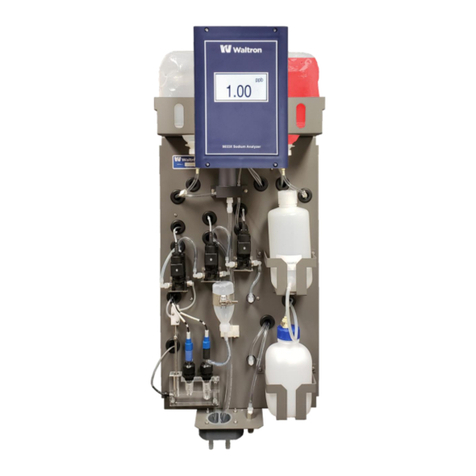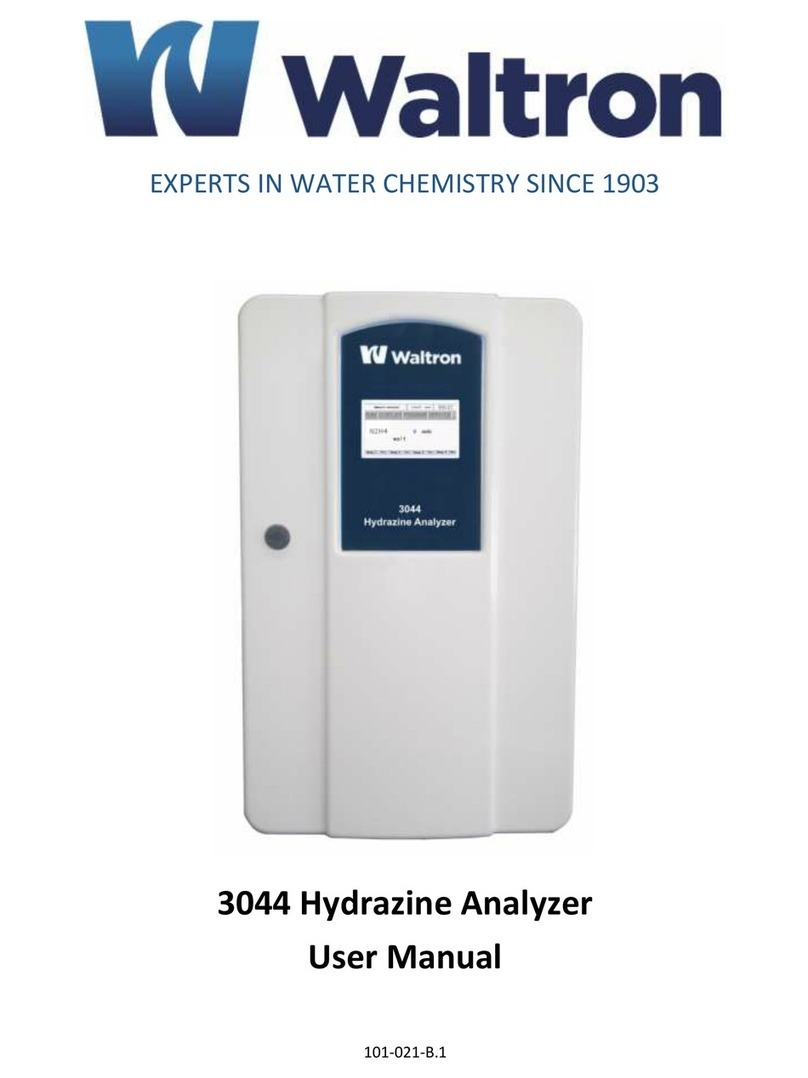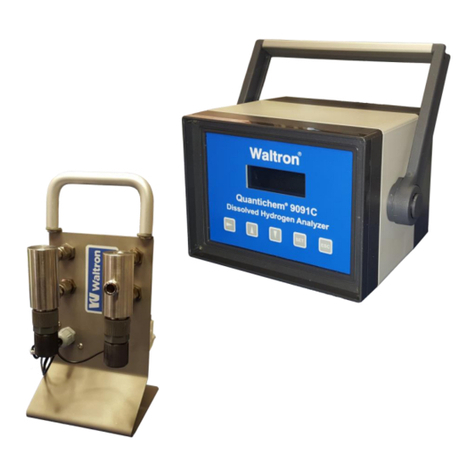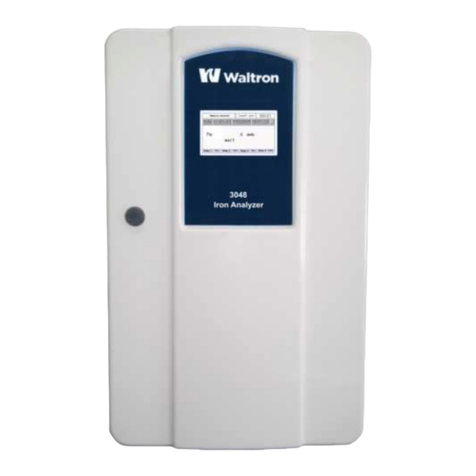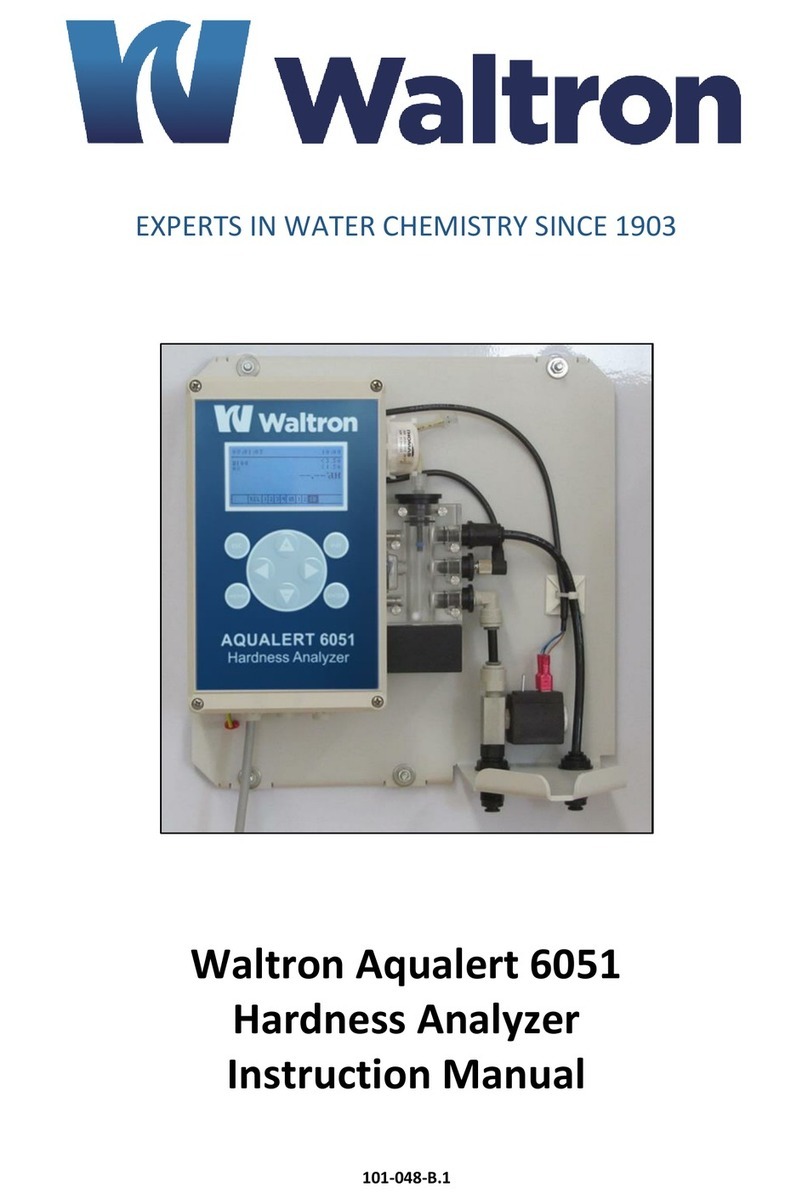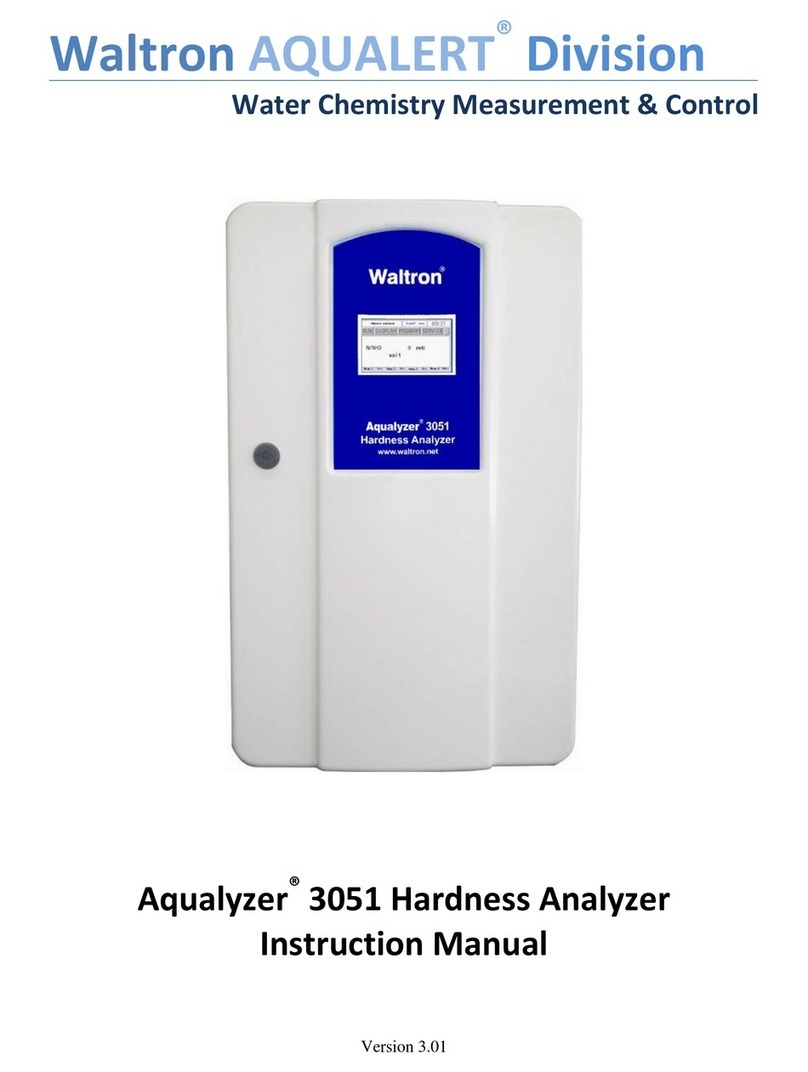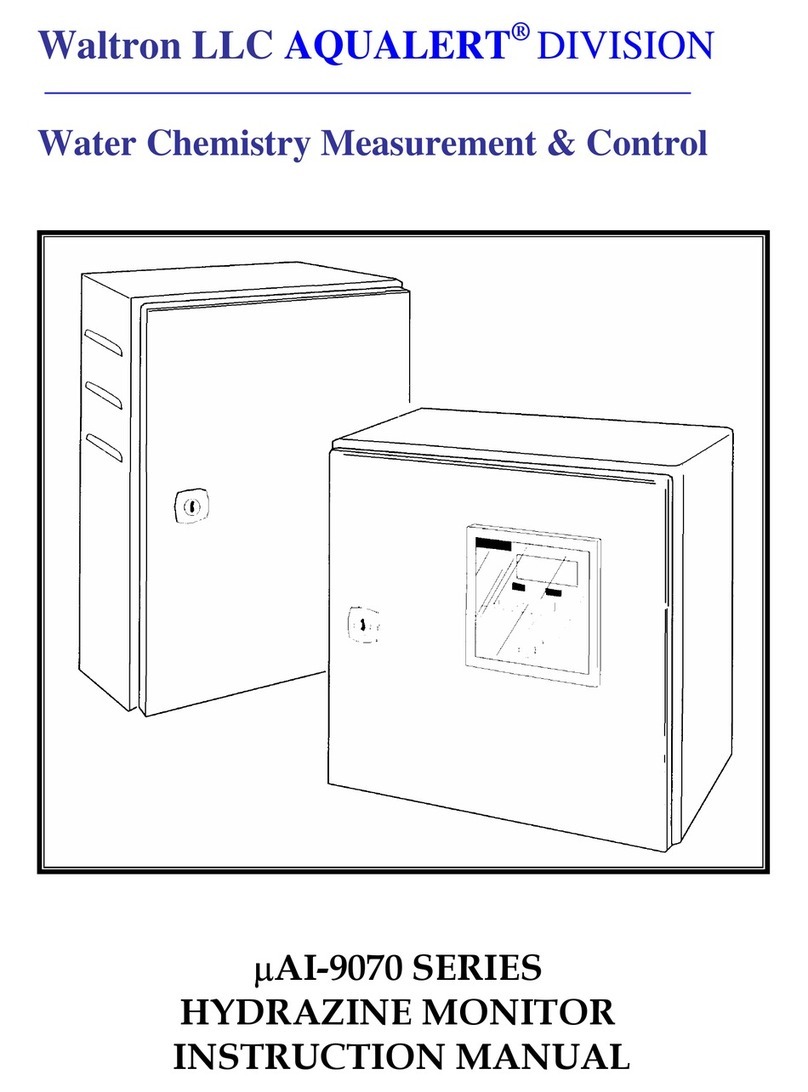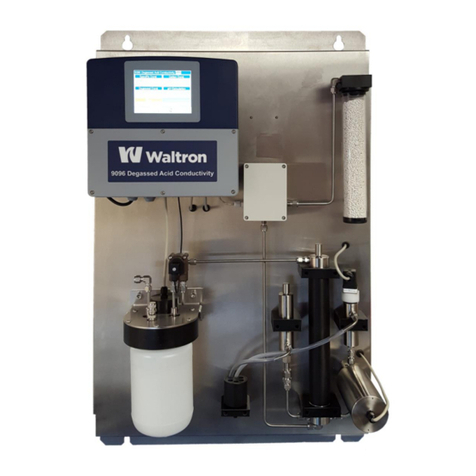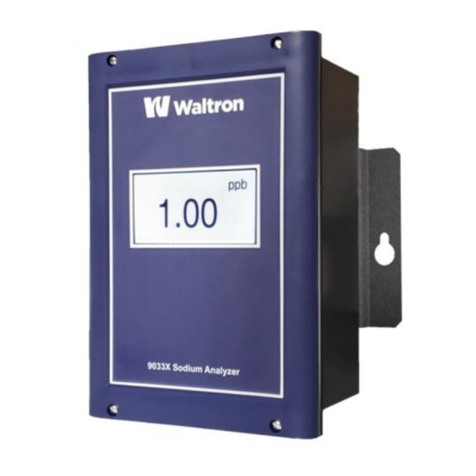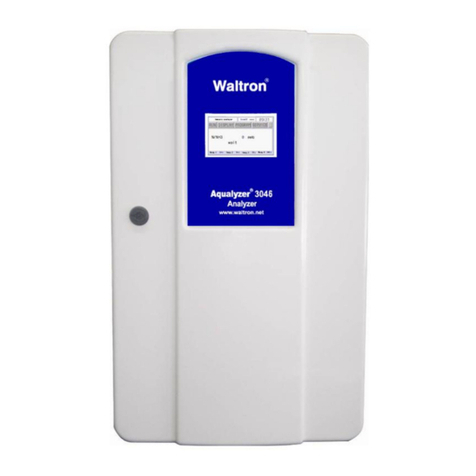
Waltron User Manual
9092 Chlorine Analyzer
TABLE OF CONTENTS
Waltron Customer Commitment.........................................................................1
Safety .................................................................................................................2
Warranty Agreement..........................................................................................3
Checklist of Materials .........................................................................................4
Table of Contents................................................................................................5
1Overview ......................................................................................................7
1.1 Specifications ................................................................................................................................7
1.1.1 Performance..........................................................................................................................7
1.1.2 Operating Conditions............................................................................................................7
1.1.3 Communications & Signal Outputs .......................................................................................7
1.2 Safety Precautions, Instructions, and Hazards..............................................................................7
1.2.1 General Information .............................................................................................................7
1.2.2 List of Warnings and Potential Dangers................................................................................9
1.2.3 Sample.................................................................................................................................10
1.2.4 Analyzer General Hazards...................................................................................................10
2Introduction................................................................................................11
2.1 Preliminary Remarks...................................................................................................................11
2.2 Working Principle........................................................................................................................11
2.3 Analyzer Layout...........................................................................................................................13
2.4 Wet-Section ................................................................................................................................14
2.5 Electronics...................................................................................................................................14
3Installation .................................................................................................15
3.1 Receiving.....................................................................................................................................15
3.2 Analyzer Handling .......................................................................................................................15
3.3 Location and Mounting...............................................................................................................15
3.4 Mounting Schematics .................................................................................................................16
3.5 Sample Connections....................................................................................................................17
3.6 Electrical Connections.................................................................................................................18
3.6.1 Transmitter Enclosure.........................................................................................................19
3.6.2 AC Power Connection .........................................................................................................20
3.6.3 User Signal Connections......................................................................................................21
4Analyzer Initial Start-Up..............................................................................22
4.1 Preparing the Analyzer for Start-Up .............................................. Error! Bookmark not defined.
4.2 Putting the Analyzer Online........................................................................................................22
5User Interface.............................................................................................23
5.1 Main Screen Navigation..............................................................................................................23

